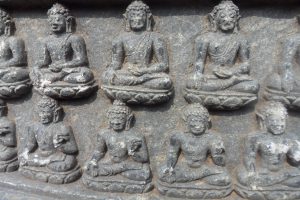UNESCO has declared Bihar’s much awaited ancient site – the ruins of Nalanda Mahavihara – a World Heritage Site, barely 98 km away from Patna (ancient Pataliputra). With the inclusion of Nalanda, this would be the second UNESCO Heritage Site after Mahabodhi temple in Bodh Gaya.
“Nalanda stands out as the most ancient university of the Indian Subcontinent. It engaged in the organized transmission of knowledge over an uninterrupted period of 800 years. The historical development of the site testifies to the development of Buddhism into a religion and the flourishing of monastic and educational traditions,” said UNESCO on its website.

“It is a matter for pride for Bihar as well as the nation” said superintending archaeologist of Patna Circle Pravin K Mishra. The ancient Nalanda University was a major Mahavihara or a large Buddhist monastery that also doubled up as an important centre of learning from the 5th to 1200 AD in the erstwhile kingdom of Magadh.
Earlier, there was a doubt whether Nalanda would be declared a heritage site by UNESCO as allegedly there were several flaws in the submitted dossier.
The principal secretary to the Bihar CM, Chanchal Kumar, had also visited Paris before its finalisation. “There were some technical flaws which were sorted out in the meeting before the UNSECO team. Now I am extremely happy to know the inclusion of the ruins of Nalanda Mahavihara in the UNESCO list. It is a matter of pride for all of us,” said Chanchal Kumar, who has been consistently following the development of Nalanda affairs.
Noted economist and member secretary of the Asian Development Research Institute (ADRI) Shaibal Gupta said: “It’s a celebration time for Bihar. This UNESCO declaration has been overdue. It will give philip to the development of the new Nalanda University as well.” This ruins of this ancient university has been finally successful in getting an international recognition it always deserved, Gupta said.
The ancient Nalanda University was a major Mahavihara or a large Buddhist monastery that also doubled up as an important centre of learning from the 5th to 1200 AD in the erstwhile kingdom of Magadh
Last year, the ruins of Nalanda university was inspected by an expert team from the Paris-based International Council of Monuments and Sites (ICOMOS), which also held talks with senior Bihar government officials in pursuance of the bid to get a UNESCO World Heritage tag for the ancient site.

The Ministry of Culture through the ASI had sent an over “200-page-long” nomination dossier on January last year and officials and staff at ASI’s Patna Circle were upbeat about the team’s visit.
The inspection of Nalanda ruins (spread over in 12 hectares) was made by Japanese expert Masaya Matsui on a positive note with expectations of inclusion of the ancient seat of learning in the World Heritage list.
The ancient seat of learning, one of the world’s oldest universities construction of which began in 5th century AD, flourished under the Gupta rulers. It came to an end in the 12th century when it was destroyed in 1193 AD by the invading Turkish army led by its commander Bakhtiar Khilji.
Media Communique by UNESCOPRESS
Archaeological Site of Nalanda Mahavihara (Nalanda University) at Nalanda, Bihar (India)
The Nalanda Mahavihara site is in the State of Bihar, in north-eastern India. It comprises the archaeological remains of a monastic and scholastic institution dating from the 3rd century BCE to the 13th century CE. It includes stupas, shrines, viharas (residential and educational buildings) and important art works in stucco, stone and metal. Nalanda stands out as the most ancient university of the Indian Subcontinent. It engaged in the organized transmission of knowledge over an uninterrupted period of 800 years. The historical development of the site testifies to the development of Buddhism into a religion and the flourishing of monastic and educational traditions.













